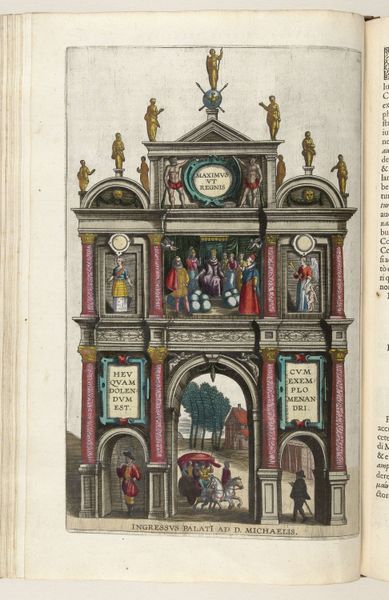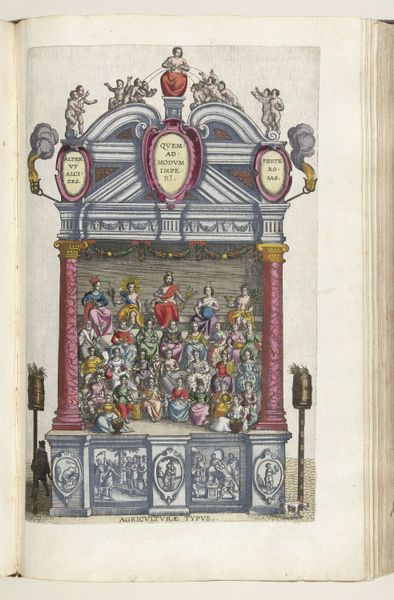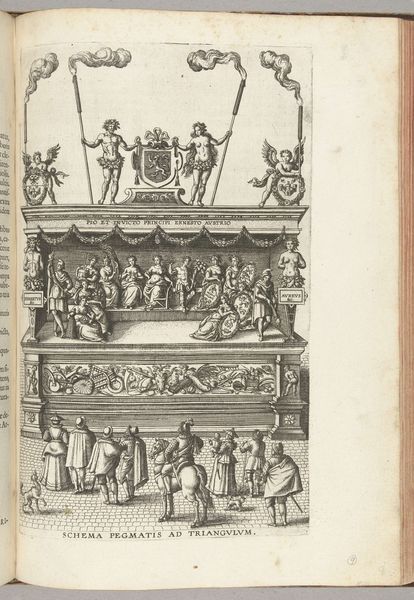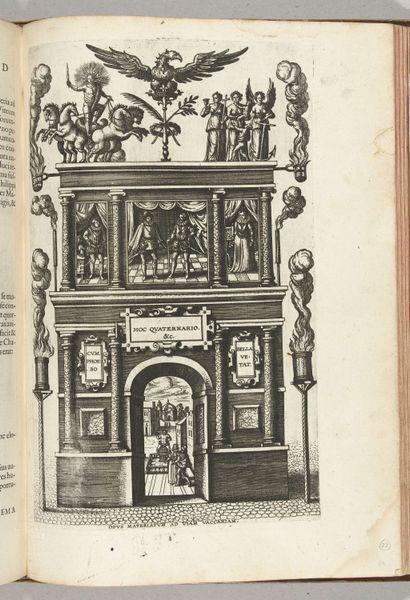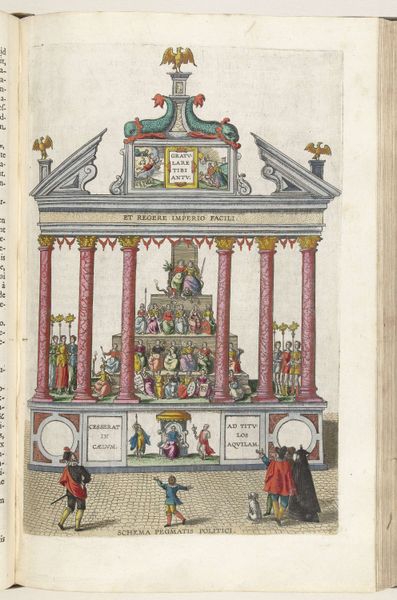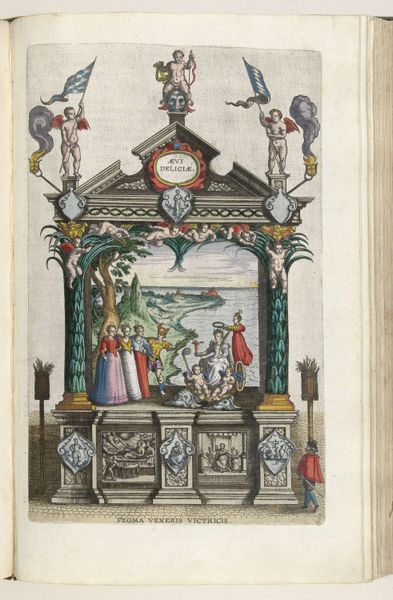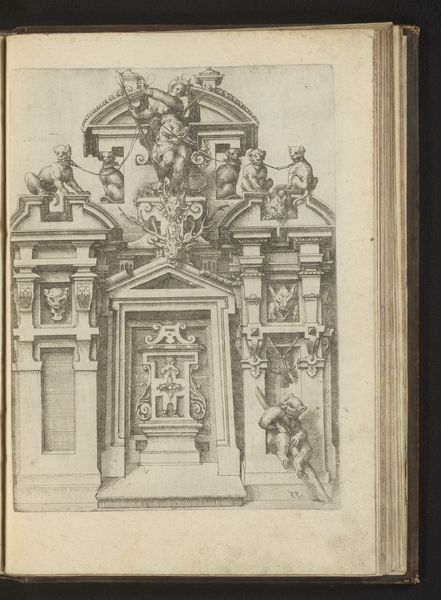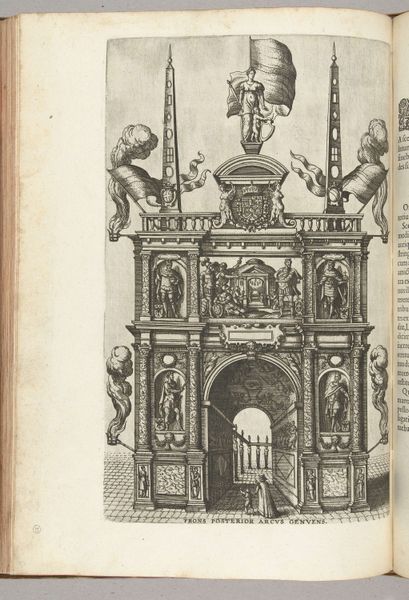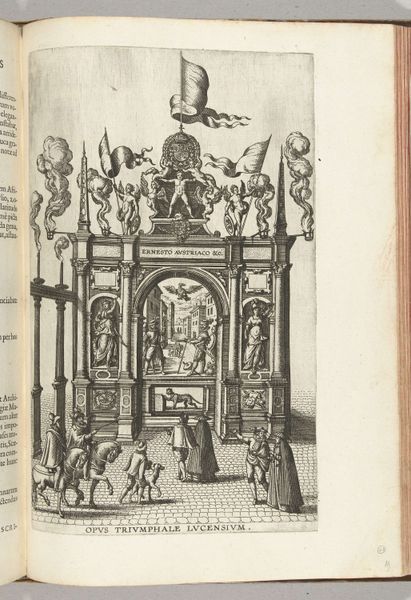
drawing, coloured-pencil, print, paper, ink, engraving
#
drawing
#
coloured-pencil
#
allegory
# print
#
paper
#
11_renaissance
#
ink
#
coloured pencil
#
geometric
#
cityscape
#
history-painting
#
engraving
Dimensions: height 323 mm, width 200 mm
Copyright: Rijks Museum: Open Domain
Editor: Here we have Pieter van der Borcht the First's "Milanese triomfpoort, 1599," a drawing realized in colored pencil, ink, and engraving, and printed on paper. The arch is so elaborately decorated that it seems more like a layered cake than a structure. I am interested to hear how you read the overall composition and construction of the drawing. Curator: Indeed. Let's consider first the organization of pictorial space, and the function of line. Note how the artist uses rigorous, almost architectural lines to define each level of the arch. How would you characterize this formal organization? Editor: Structured, maybe even rigid? There's very little flow; instead, there is a pronounced horizontal emphasis. Curator: Precisely. Observe how each layer operates as a discrete pictorial plane. The eye is led not into, but up the composition, level by level. Also, how does the geometry influence the narrative? Consider the figures in the arches… are they also constrained and governed by these principles? Editor: Well, they appear in separate framed vignettes. The composition definitely reinforces that sense of controlled, staged presentation. It's like a series of miniature theaters. What effect do you think is achieved with the limited color palette? Curator: Color, or rather the sparing use of it, acts here less as a descriptive tool, and more as an accentuation of form. Note where the colors *are* used - drawing our attention to key structural points. It functions as highlighting. The print emphasizes the geometry by selectively applying color, in that the structure supersedes individual elements. Have your thoughts about this piece changed as a result of this conversation? Editor: I've come to appreciate how meticulously Van der Borcht uses line and selective color application to underscore the hierarchical organization of this arch. I initially overlooked that in favor of the overall effect! Curator: Likewise, focusing on the structure allowed us to better decode the organization.
Comments
No comments
Be the first to comment and join the conversation on the ultimate creative platform.
